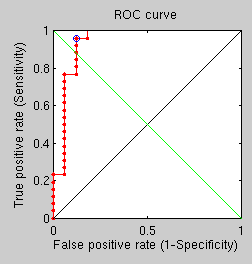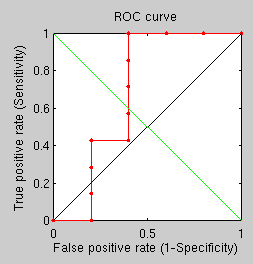Wednesday, January 18th, 2012, 8:09 pm
Increase in Number of Points in GMDS for Classification Purposes
GMDS for surface pairs comparison
 S natural succession to the previous experiments, I compromise speed and increase the number of points in GMDS from 10 to 50, hoping to see performance improved noticeably. So far, based on results that are coming out, no classification mistakes are being made, but more pairs need to be tested overnight before meaningful conclusions can be drawn.
S natural succession to the previous experiments, I compromise speed and increase the number of points in GMDS from 10 to 50, hoping to see performance improved noticeably. So far, based on results that are coming out, no classification mistakes are being made, but more pairs need to be tested overnight before meaningful conclusions can be drawn.
As expected, increasing the number of points in GMDS helped improve performance, at the expense of speed of course.
They will now be increased even further to see how good an improvement can be made.

I have begun running GMDS-based recognition experiments with 300 points rather than the originally/already-tested 50. So far, based on 18 pairs, the classification is perfect (albeit the process is slow). It will be interesting to see how long it runs before the first error occurs. There was a talk back in December about a new server potentially arriving, with a lot more x86 cores in it.
Following the first mistake of the classifier, the ROC curve looks like this.

The next step doubles the density of the triangulation to see how major an improvement in performance it can entail (we never tried as many as 8,000+ vertices in such experiments).
With ~8,050 vertices the results are a bit baffling. Both computational servers got rebooted midway (memory upgrade), so there is not much data — to say the least — to base these results on.
By summing up all the GMDS stress (multiple iterations) we get iffy results.

By taking the optimal fit (over all iterations) we get something better.

In summary, despite the small size of the sample, it does seem to suggest that using a triangulation too dense leads to poor results or does not lead to optimal performance. I’ll explore other route towards improvement; adding density just slows things down considerably.






 Filed under:
Filed under: 
